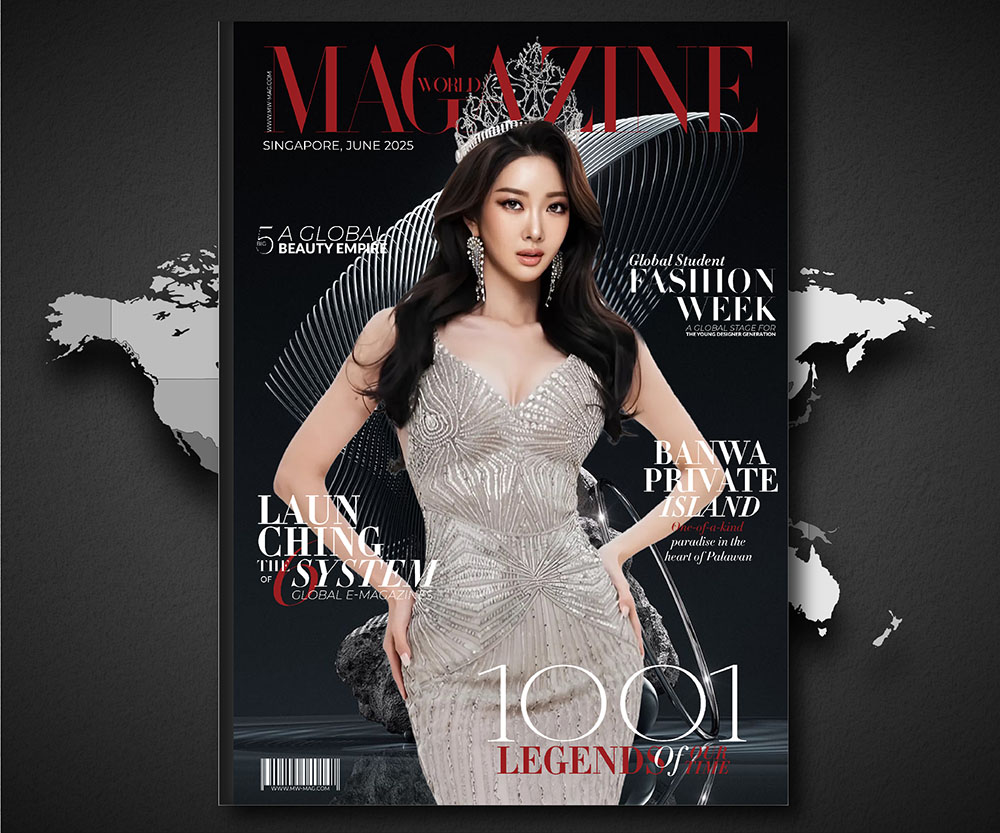In the quiet hum of an early Manhattan morning, A\$AP Rocky is more than just a global music icon or fashion provocateur—he’s a man navigating fatherhood, fame, and a legacy rooted deeply in Black excellence. In the days following his recent legal victory, Vogue follows the Harlem-born artist through intimate moments with family, bold declarations of style, and reflections on a life that continues to evolve under the city lights and global spotlight.
Late nights and lived truths
It’s 1:00 a.m. at Soho House, and A$AP Rocky is sizing up his next pool shot. Wrapped in casual white cotton and faded denim, his Saint Laurent trench coat and Chanel trapper hat rest nearby like silent trophies of his sartorial prowess. There’s a sense of calm celebration in the air—just over a week ago, Rocky was acquitted on assault charges. Now, surrounded by friends, collaborators, and family, he’s basking in a collective exhale.
Rocky’s night, which began ten hours earlier, has stretched into a slow burn of meetings, laughter, tea, and shared energy. His inner circle includes everyone from his assistant Marco to his grandmother Cathy, who joins the Vogue shoot in regal red with pearls and kitten-heeled gold mules. “She was my best friend,” Rocky says of Cathy, with the warmth of a grandson who still visits her Harlem apartment and naps in his old bedroom.
Harlem’s echoes and everyday rituals
A day spent in Harlem with Rocky feels like a walking oral history. As his Rolls-Royce glides past familiar buildings, he shares memories with ease, pointing out corners that shaped him and stories few others know. Despite his global stature, Rocky insists on staying grounded. “I know who I am, but none of that matters,” he says. “I’m still regular, as much as possible.”
At his grandmother’s apartment—modest, lived-in, and brimming with the comfort of history—Rocky shows where he still air-dries laundry and watches cartoons. “You’re going to be like, You stay here?” he laughs. But there’s no irony. The apartment is a sanctuary, a tether to his beginnings. “She likes to air-dry,” he adds, watching the clothes sway above a china cabinet that could belong to any Black grandmother in America.
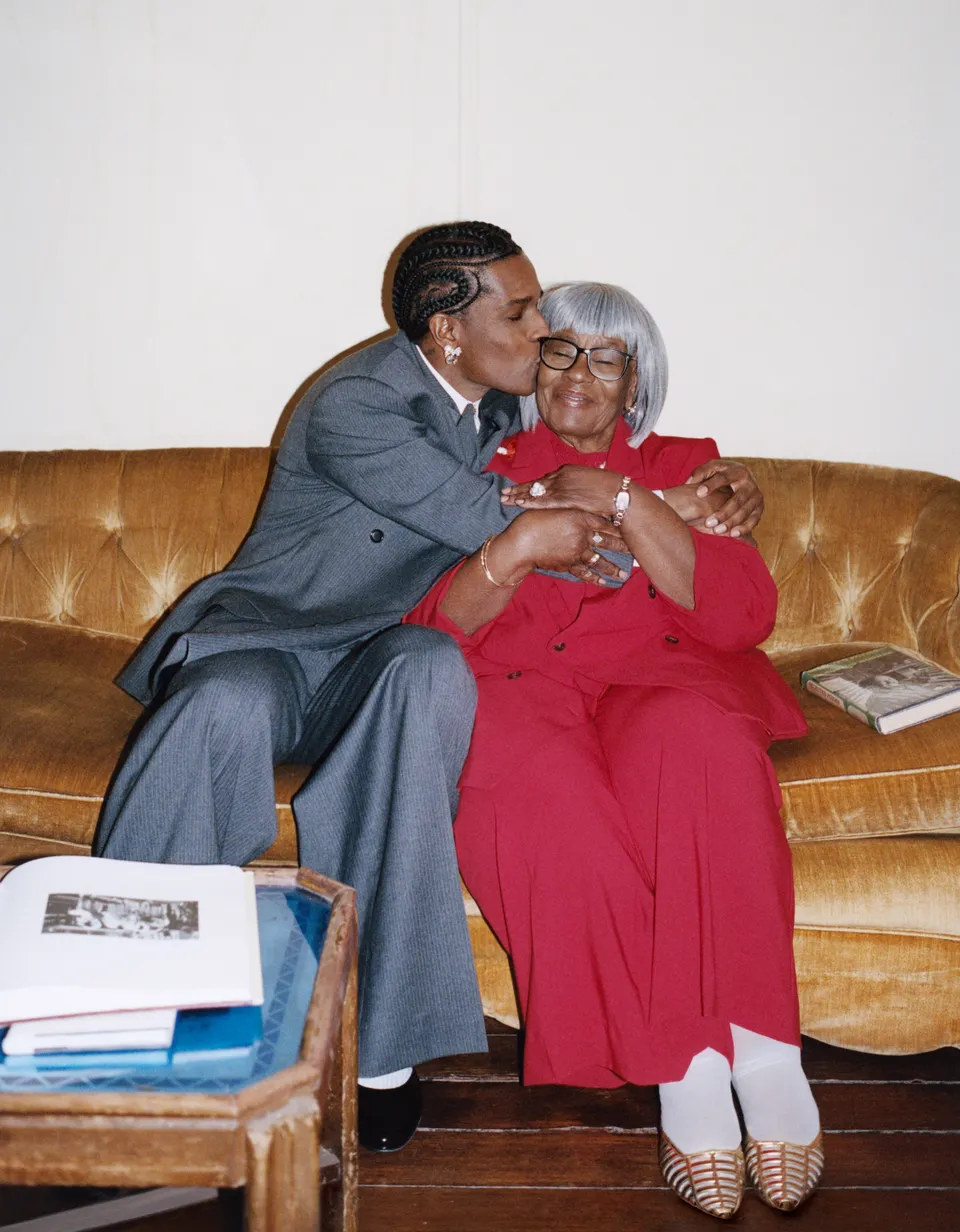
Cathy, proud and sharp, reflects on Rocky’s journey from “Rockman” to global icon. “I always knew he was going somewhere,” she says. But what moves her most is the father he’s become—to sons RZA and Riot—with partner Rihanna. “She’s down-to-earth,” Cathy says. “I’m glad he settled down with her.” It helps, Rocky jokes, that both Rihanna and Cathy share Bajan roots.
The style of substance
Back at the Vogue shoot, in a church basement not far from Langston Hughes’s former home, Rocky’s wardrobe is a curated mélange of Balmain, Jacquemus, and vintage Louis Vuitton. His fashion philosophy? “That’s regular for us, bro,” he says. “I’m from Harlem. We showed y’all how to do this.” Whether he’s donning pearls or kilts, fur coats or Saint Laurent suits, Rocky resists being boxed in. Style, for him, is an extension of self, not a performance.
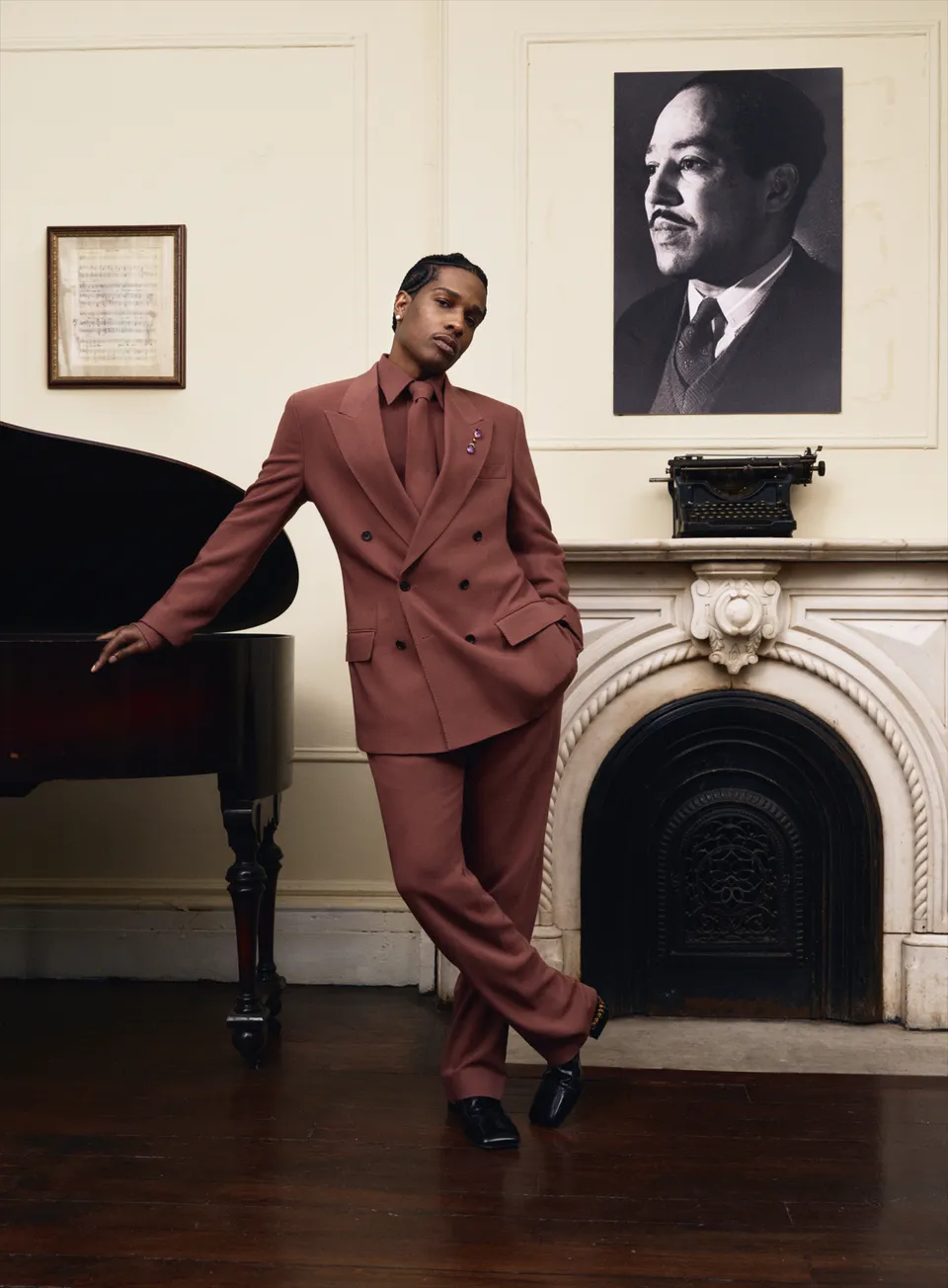
That afternoon, he playfully critiques Law Roach’s diamond-bezel Audemars Piguet—“That’s my watch, bro!”—and talks design dreams inspired by *The Brutalist*, a film he says he watched three times. “I’m an aspiring furniture designer,” he declares with genuine interest. His creative agency, AWGE, isn’t just producing clothes—it’s building narratives, identities, and perhaps, entire rooms.
A family man in a world of fame
At Soho House, Rocky’s suite has become part recording studio, part playroom. Toys for his sons are stacked next to lime-green coatracks he designed, and his iconic luggage serves both functional and aesthetic purpose. “I need to include what I just experienced,” he says, hinting at new material for “Don’t Be Dumb”, his long-awaited album.
Fatherhood has changed him. “The older one, he stays to himself—he likes his books,” he says of RZA. Riot, the younger, “likes to take stuff from his brother so his brother can chase him.” It’s a slice of everyday chaos he clearly misses. His love for Rihanna, too, is profound: “internal, external, infinite, the past, the future.”
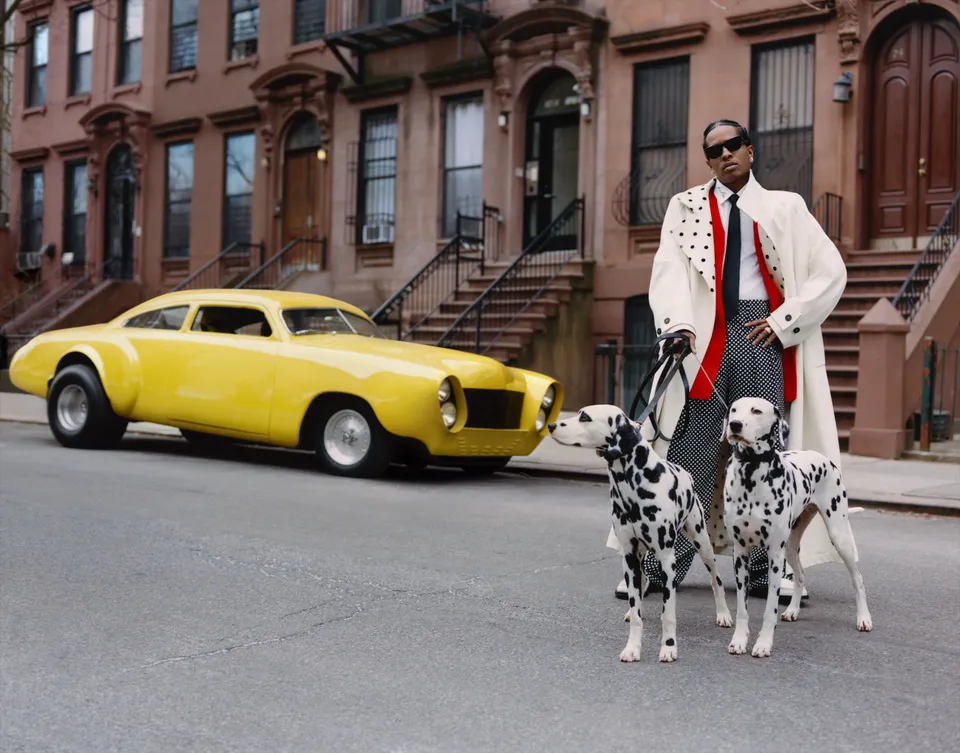
These human moments pierce through the glamour. Whether it’s ordering orecchiette from Cucina Alba or FaceTiming family between takes, Rocky oscillates between the worlds of high art and home life with unshakable ease.
Black excellence, red Carpets, and reclaimed spaces
Rocky’s co-chair status at this year’s Met Gala may not have surprised him—“Who else?” he jokes—but it holds weight. The exhibition, “Superfine: Tailoring Black Style,” is especially meaningful. “It’s genuine,” he says. “And very, very important.” To him, this isn’t just fashion—it’s reclamation.
His influences span decades: Louis Armstrong, Malcolm X, Dipset, even his own father. Rocky sees himself not just as a trendsetter but a thread in a larger cultural fabric. When asked what he’s most excited for, he replies, “Seeing everybody celebrate Black excellence.”

Ironically, Rocky’s first time at The Met wasn’t as a young New Yorker on a school trip, but as a star in 2014. “I know that sounds mad ignorant,” he says. “But the Louvre isn’t always filled with Parisians either.” It’s a reminder of how systemic inequities can shape access—even for locals in cultural epicenters.
Art, energy, and eternal evolution
As the night winds down, Rocky visits photographer Tyler Mitchell’s latest exhibition, “Ghost Images,” at the Gagosian. He studies the works carefully, reacting with cinematic awe. “That’s the one,” he says, pointing to a print of three women in white.
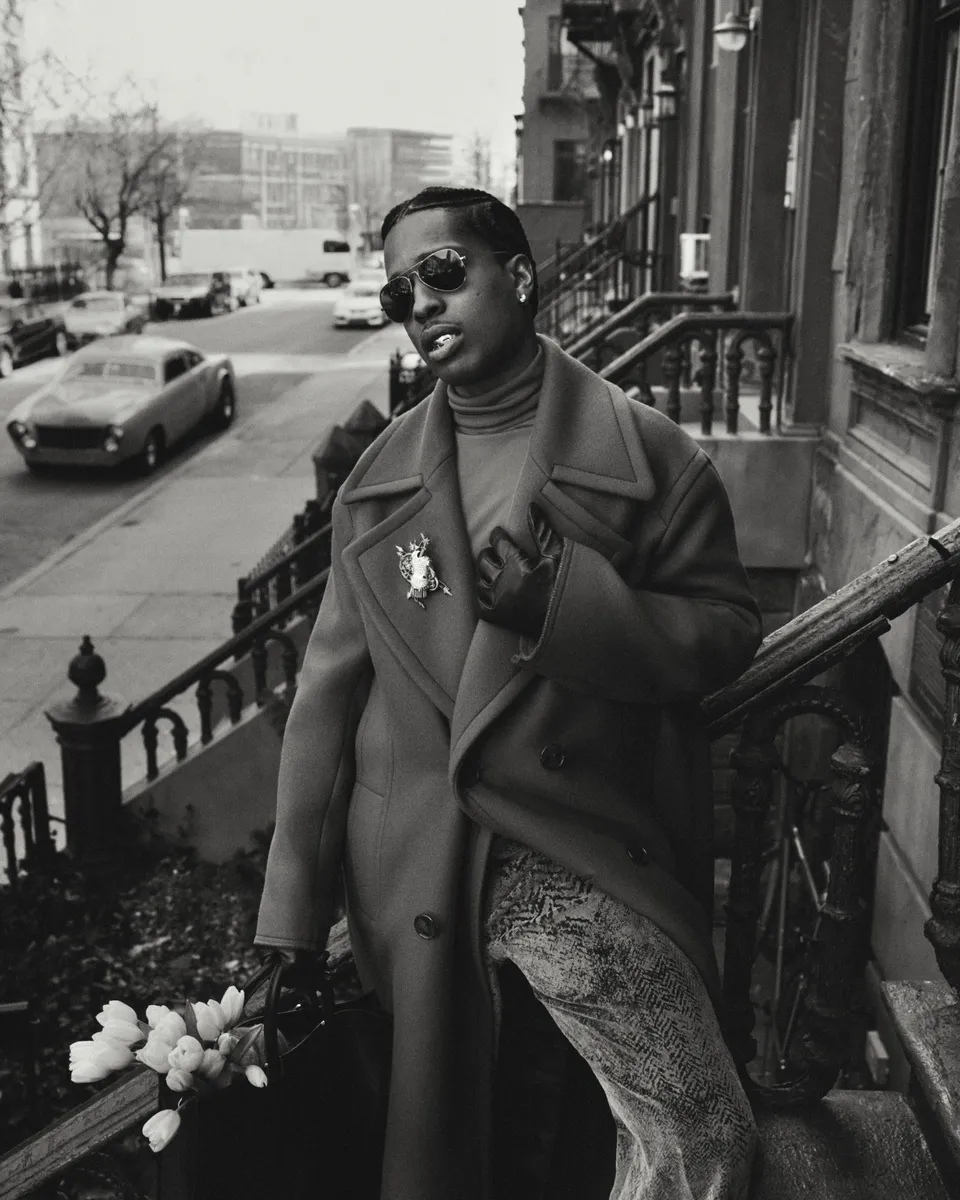
For Rocky, art isn’t background—it’s conversation. The praise he gives others is as sincere as the admiration he receives from fans who spot him through open car windows. “It’s just an exchange of energy,” he says. “When you come across people that genuinely match that energy, you feel like a kindred spirit.” That’s what Rocky is, in essence: an energy. A constellation of Harlem roots, global resonance, familial devotion, and aesthetic risk-taking. A\$AP Rocky is building not just a discography or fashion archive, but a philosophy. One rooted in love, legacy, and an unapologetic celebration of Black identity.
And in the hush of late-night Manhattan, where style meets soul and memory meets ambition, that philosophy feels more powerful than ever.


